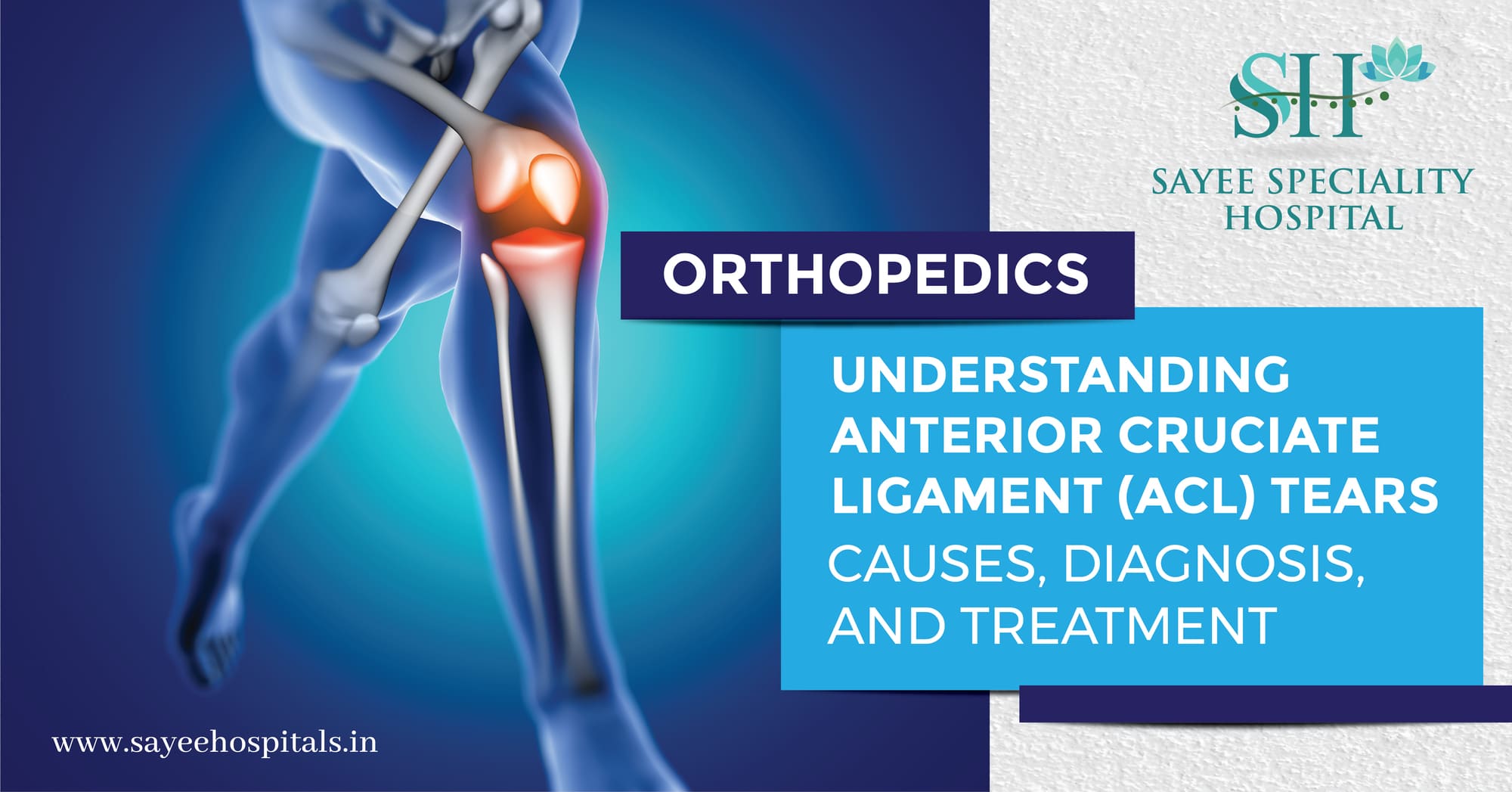The Anterior Cruciate Ligament (ACL) is a vital structure located in the center of the knee, playing a pivotal role in controlling rotation and forward movement of the tibia (shin bone). ACL tears are common, often resulting from sports-related injuries, road traffic accidents, falls, or work-related incidents involving sudden changes in direction or abrupt actions like landing from a jump.
Causes and Risk Factors:
ACL tears typically occur during activities such as sudden shifts in direction, landing on one leg, direct hits to a hyperextended knee, repeated stress, or falls. Notably, female athletes are three times more likely to experience ACL injuries than their male counterparts. High-thrust sports like football, basketball, volleyball, and tennis pose a higher risk. Previous ACL injuries increase the likelihood of re-tearing, with a 15% higher risk than tearing a normal ACL. Age also plays a role, with the age group of 15-45 being particularly vulnerable due to an active lifestyle and increased sports participation.
Symptoms and Grades of Injury:
Common symptoms of an ACL tear include a loud “popping sound” in the knee, severe pain, knee buckling, and rapid swelling. ACL tears are classified into three grades:
- Grade 1: Minor tear with tenderness and swelling.
- Grade 2: Incomplete tear with increased anterior translation around the knee joint.
- Grade 3: Complete tear, causing joint instability, severe tenderness, and pronounced swelling.
Diagnosis and Treatment:
To diagnose ACL tears, medical history, physical examination, MRI scans, and X-rays are utilized. Treatment options vary based on the grade of the injury and patient preferences. Non-surgical options may suffice for individuals with low functional demands, while surgical intervention is recommended for those wishing to resume sports activities.
ACL Reconstruction Surgery:
ACL reconstruction involves removing the damaged ligament and replacing it with a segment of tendon, known as a graft. The surgery is considered successful in stabilizing the knee and preventing repetitive dislocations. Sockets or tunnels are drilled into the thighbone and shinbone to position the graft accurately, secured with screws or fixation devices.
Rehabilitation:
Rehabilitation is divided into two phases:
- Acute Phase/Conservative Management:
Goals include reducing swelling, maintaining muscle power, and ensuring proper blood circulation. Exercises focus on static quads, ankle movements, knee flexion/extension, patellar mobilizations, and more.
- Postoperative Phase:
Goals involve educating patients about the rehabilitation protocol, quadriceps exercises, knee swinging, strengthening, and improving posterior knee stability.Exercises include isometrics, straight leg raises, range of motion activities, knee extension exercises, and strengthening exercises using stationary bicycles, swimming, and treadmills.
Anterior Cruciate Ligament tears are prevalent injuries with significant implications, particularly in the realm of sports. Understanding the causes, risk factors, symptoms, and treatment options is crucial for effective management. Whether opting for surgical or non-surgical interventions, a comprehensive rehabilitation program is essential to restore functionality and ensure a successful recovery.
